Typical Saudi Arabia food

Geographic setting and environment
Saudi Arabia, the third largest country in Asia, makes up about four-fifths of the Arabian Peninsula. The other countries that share the peninsula – Yemen, Oman, the United Arab Emirates, Qatar, Bahrain and Kuwait – have a much smaller area. A narrow plain runs along the Red Sea coast. The Hijaz Mountains (Al Hijaz) rise sharply from the sea. At least a third of the total area is a sandy desert. There are no lakes, and except for artesian wells (wells where water flows naturally to the surface) in the eastern oases, there are no rivers or streams where water flows.
History and food
The people of Saudi Arabia are descended from tribes of nomadic sheep and goat herders and maintain many of the traditions of their past. Traditional foods such as dates, fatir (flatbread), arikah ( bread from the south-west of the country) and hawayij (a mixture of spices) are still eaten by Saudis today, although most Saudis have become settled in towns and cities and no longer follow the nomadic lifestyle. Saudi Arabia is also home to Mecca, the origin and spiritual center of Islam. The culture, as well as the laws of Saudi Arabia, is based on Islamic principles, including dietary restrictions against the consumption of pork or alcohol.
In the 1930s, oil was discovered in the Arabian Peninsula. Oil revenues have enabled Saudi Arabia to modernize and begin to develop stronger industries in other areas, such as agriculture. Saudi Arabia now produces all of its own dairy products and most of its own vegetables. Many foreign workers are needed to support the new industries, and foreign food as well as fast-food chains are now available in Saudi Arabia. However, it is mainly foreigners who eat these foods; most Saudis prefer traditional food.
Fatir (Flat Bread) 8portions
Ingredients
- 1 loaf of frozen white bread dough, thawed according to package directions.
- wok
Process
- Turn the thawed bread dough out onto a floured surface.
- Divide it into 6 parts. Flatten each piece under the palm of your hand and dust lightly with white flour.
- Roll out one piece at a time, keeping the rest covered with a damp kitchen towel, to make 6 flatbreads about 10 inches in diameter. The bread will be very thin, so handle it carefully.
- Spray the outside of the wok with cooking spray and place the wok, upside down, over a burner on the stove. Heat it over medium-high heat.
- Using oven mitts, carefully place bread on curved surface. (This will be awkward. If the gloves make it impossible to handle the batter, use two spatulas or wooden spoons to lift the batter and drop it into the wok.)
- Press down gently, with a wooden spoon, to make sure all parts of the bread touch the cooking surface.
- Cook for 1½-2 minutes. Using tongs, carefully flip the bread over and cook the other side.
- When the bread is fully cooked, remove it from the wok and wrap it in a kitchen towel to keep it warm.
- Cook the rest of the loaves in the same way.
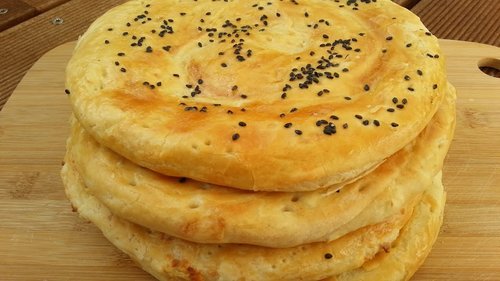
Hawayij (mixture of spices)
Ingredients
- 2 tablespoons black peppercorns
- 1 tablespoon caraway seed
- ½ teaspoon cardamom seed
- 1 teaspoon of saffron threads
- 1 teaspoon of turmeric
Process
- Combine the peppercorns, caraway seeds and cardamom seeds in a dry pan and toast over high heat for 2-3 minutes, stirring constantly with a wooden spoon.
- Put the roasted seeds in a mortar or spice mill and pound or grind them into a powder. Alternatively, wrap in a clean kitchen towel, place the package on a hard surface (such as the garage floor or sidewalk) and tap on it with a hammer. All spices must be ground into powder form.
- Add the saffron threads and crush or grind again. Transfer the spices to a mixing bowl.
- Add the turmeric and mix well.
Store in a glass or plastic container with a lid. (An empty spice jar works well.)
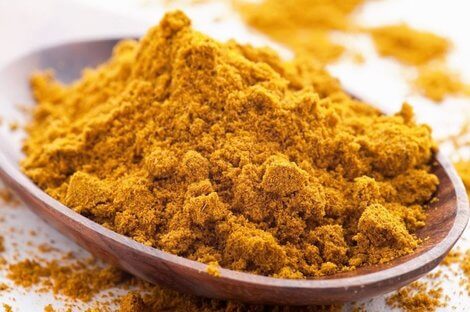
Haysa Al-Tumreya (sauce for dates) 6appetizer portions
Ingredients
- ¾ cup of flour
- ½ vegetable shortening or vegetable oil
- Dates, pitted
Process
- Combine the flour and vegetable shortening or oil in a saucepan.
- Heat over low heat, stirring constantly with a wooden spoon, until the mixture is golden brown.
- Take it off the heat and pour it onto a plate.
- Serve while hot with a bowl of pitted dates.
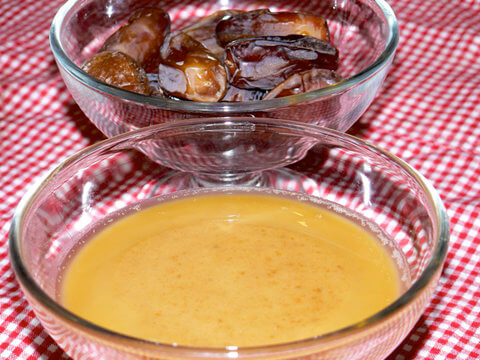
Saudi food
The people of Saudi Arabia are very traditional and eat the same foods that they have eaten for centuries. The average food of the nomadic Bedouins who remain in Saudi Arabia is much simpler than that of the urban Saudis who make up the majority of the current population of Saudi Arabia. However, the basic ingredients are the same: beans, wheat, rice, yogurt, dates and chicken are staple foods for all Saudis. Saudi Arabia has more than 18 million date palm trees that produce 600 million pounds of dates each year.
The Saudis are the world’s largest consumers of broiler chickens, eating an average of 88.2 pounds of chicken per person per year. The Saudis are strict Muslims and, according to Islamic law, do not eat pork or drink alcohol. Lamb is traditionally served to guests of honor and at parties. According to Islamic law, animals must be slaughtered in a particular way and blessed before they can be consumed, making Saudi Arabia the world’s largest importer of live sheep.
Camel (or sheep or goat) milk has long been the staple of the Bedouin diet, and dairy products remain a favorite of all Saudis. Yogurt is eaten plain, used in sauces, and made into a drink called lassi. Flatbreads – fatir, a flatbread cooked in a curved metal pan over a fire, and kimaje, similar to pita – are the other mainstay of the nomadic diet eaten by all Saudis. These breads are used at every meal, instead of a fork or spoon, to pick up other foods.
Kapsa (Chicken and rice) 6portions
Ingredients
- 2 tablespoons olive oil
- 1 small or medium onion, chopped
- 3 teaspoons ground cardamom
- 1 can (about 2 cups) chicken broth
- 1½ cups of water
- 1 tomato, chopped
- 1 6-ounce can tomato paste
- 2 teaspoons of garlic powder
- 1 teaspoon lemon rind
- 1 cinnamon stick
- Salt to taste
- 1 small box of raisins
- 1 package boneless skinless chicken (4 breast halves
- 1 package boneless, skinless thighs (4 to 6 thighs)
- 1½ cups white Basmati rice
Process
- Preheat oven to 300°F.
- Wash chicken thoroughly and pat dry with paper towels.
- Put the chicken on a baking sheet and bake in the preheated oven until fully cooked (about 30 minutes).
- While the chicken is baking, heat the oil (medium-high) in a large pot. Add the chopped onions and a teaspoon of cardamom, stirring constantly until golden brown.
- Add chicken broth and 1½ cups of water to the pot. Add the remaining 2 teaspoons cardamom, tomato, tomato paste, garlic powder, lemon peel, cinnamon stick, salt, and raisins to the browned onions and water.
- Cook over medium-high heat, stirring occasionally, for 2-3 minutes. Add the rice.
- Bring to a boil and immediately lower the heat to low. Cover the pot tightly and cook over low heat for 15 minutes.
- After 10 minutes, check the rice to see if it has absorbed all the liquid.
- If the rice is dry but still not soft, add a little more water and continue to simmer. Don’t stir the rice! The rice is done when all the liquid has been absorbed and the rice is soft.
- When both the rice and the chicken are cooked, place the rice on a tray and put the chicken on top in the middle.
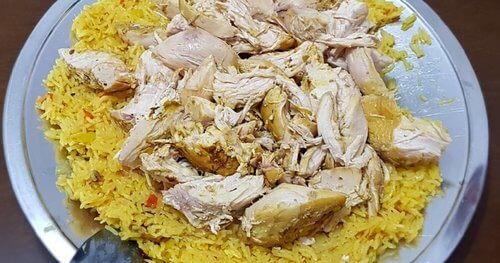
Kimaje (flat bread)
This bread is traditionally served hot from the oven and is used to scoop up other foods.
Ingredients
- 1 packet of active dry yeast
- 1¼ cups warm water (more as needed)
- 1 tablespoon vegetable oil
- ½ teaspoon sugar
- ½ teaspoon of salt
- 3½ cups all-purpose flour (more or less as needed)
Process
- In a large mixing bowl, dissolve the yeast in the warm water.
- Add the oil, sugar, salt, and 2 cups of flour, and stir until smooth.
- Add just enough of the remaining flour to make a dough that is not sticky and easy to work with.
- Turn the dough out onto a lightly floured work surface and knead until smooth and elastic, about 10 minutes.
- Put the dough in a large, lightly oiled mixing bowl and move it around to grease all sides with the oil.
- Cover the bowl with a towel and place in a warm place to rise for an hour, until the dough doubles in size.
- When the dough has risen, punch it down and move it to a lightly floured work surface. Divide into 6 equal balls.
- Place the balls side by side on your work surface and cover them with the towel. Let them rise for another 30 minutes.
- After they’ve risen, flatten each ball with a lightly floured rolling pin or the palm of your hand, until it’s a circle about ⅛-inch thick and 6 inches wide.
- Using 3 cookie sheets, place 2 loaves on each so they are not touching, cover with towels and let rise for another 30 minutes.
- Preheat oven to 450°F.
- When loaves have risen, bake for about 10 minutes or until golden brown and puffy.
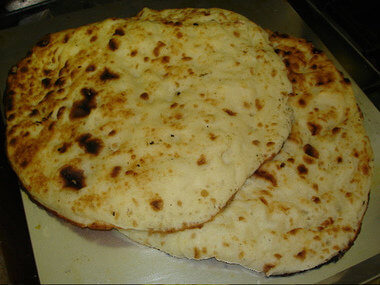
Laban Drink (Yogurt Drink)
Ingredients
- ½ glass of ice water
- ½ cup plain yogurt (unsweetened)
- 4 to 6 ice cubes (optional)
Process
- Combine the water and yogurt in a blender and blend until smooth.
- If you don’t have a blender, put water and yogurt in a tall glass and shake vigorously until smooth.
- Serve, over ice cubes if desired.
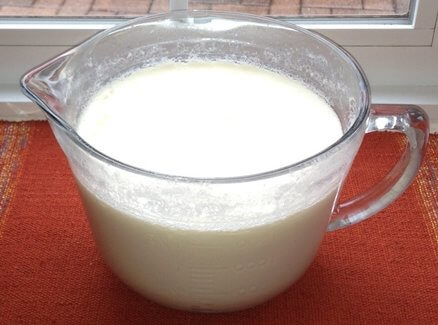
Food for religious and festive celebrations
Saudi Arabia is a Muslim nation. National holidays are Islamic holidays, including Ramadan (a month of fasting from sunrise to sunset), Eid al-Fitr (the festival at the end of Ramadan), and Eid al-Adha (the festival of sacrifice). Two of the five pillars (requirements) of Islam are making a pilgrimage to Mecca, and giving aid to the poor. Eid al-Adha, which occurs at the end of the pilgrimage month, re-enacts the story of God giving Abraham a ram to sacrifice in place of his son Isaac. He also fulfills the requirement of giving to the poor, having a lamb ritually sacrificed and donating the meat to those in need.
Most Saudi holiday foods include thick soups, stuffed vegetables, bean salads or tabbouleh (a salad made from bulgur wheat), hummus, rice, and the flatbread eaten with every meal. Dates, raisins and nuts are served as appetizers or snacks, and sweet desserts finish the meal. Ornate rugs are placed on the floor and plates of food are placed on them. Partiers sit cross-legged on the floor around rugs and eat with fingers or bread, sharing from the same plates. The hands are ritually washed, in accordance with Islamic law, before and after eating.
Saudi style rice
Ingredients
- 3 cups of rice
- 1 tablespoon of oil
- 1 small onion, chopped
- 2 garlic cloves, minced
- ½ cup golden raisins
- 2 tablespoons tomato paste
- ½ teaspoon of cloves
- ½ teaspoon cinnamon
- 1 tablespoon cardamom (ground, not whole pods)
- Salt and pepper to taste
- 2 tablespoons pine nuts, toasted
- ¼ cup toasted almonds
Note: To toast pine nuts and almonds, heat a small amount of olive oil in a pan. Add the walnuts and cook, shaking the pan frequently, until the walnuts are golden brown.
Process
- Measure the rice into a bowl, cover it with cold water and let it soak for 15 minutes.
- Meanwhile, cook onions and garlic in oil over medium heat in a large saucepan.
- After the rice has been soaking for 15 minutes, add it with tomato paste and raisins to the meat mixture.
- Add the seasonings (cloves, cinnamon, cardamom, salt and pepper) and stir to combine. Lower the temperature and cover up.
- Let it simmer for about 10 minutes. Check that the mixture is not too dry. If no more liquid is visible, add a little more water (½ cup at a time).
- Continue simmering for about 10 more minutes, until the rice is tender.
- Serve the dish garnished with toasted walnuts and accompanied by plain yogurt.
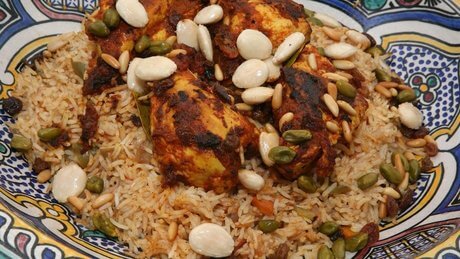
Tabbouleh (Bulgarian Wheat Salad) 6portions
Ingredients
- 1½ cups fresh parsley, stems removed, washed and drained
- 1 cup of bulgur wheat
- 2 cups of boiling water
- ½ cup green onions, washed, trimmed, and chopped
- 3 tomatoes, finely chopped
- 2 teaspoons crushed dried mint leaves
- ½ fresh lemon juice
- ¼ cup olive oil (more or less as needed)
- Salt and pepper to taste
Process
- Finely chop the parsley (or with very clean scissors).
- Put the chopped parsley in a medium mixing bowl.
- Put the bulgur in a small mixing bowl, cover it with boiling water and let it soak for 30 minutes.
- Drain the bulgur and squeeze out excess water with (clean) hands. Add bulgur to the parsley.
- Add onions, tomatoes, mint, lemon juice, oil, salt and pepper to the bulgur and parsley mixture. Mix well, adding more oil if necessary to cover the mixture.
- Cover and refrigerate for at least an hour.
- Take it out of the fridge and let it come back to room temperature before serving.
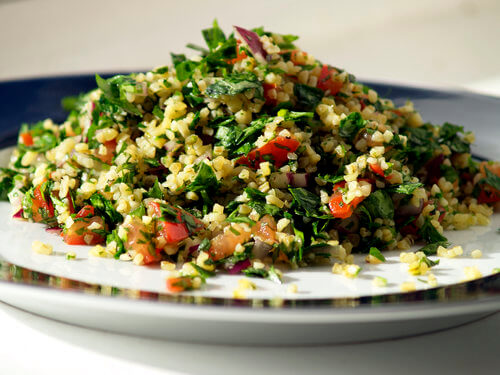
hummus
Ingredients
- 2 cans of chickpeas.
- 6 tablespoons tahini (sesame seed paste, available at ethnic food stores, supermarkets, or organic/health food stores)
- 3 large cloves of garlic
- ¼ of the liquid from a can of chickpeas
- ⅓ cup lemon juice
- Salt and pepper to taste
- Olive oil
- Paprika
- chopped fresh parsley
Process
- Combine chickpeas, tahini, garlic, canned chickpea liquid, and lemon juice in a food processor or blender and puree to a smooth paste.
- Thin with more liquid from the canned chickpeas, if needed. Add salt and pepper to taste. Pour it into a serving bowl.
- Mix olive oil with a little paprika to make it red and sprinkle it over the hummus. Sprinkle with parsley. Serve with pita bread.
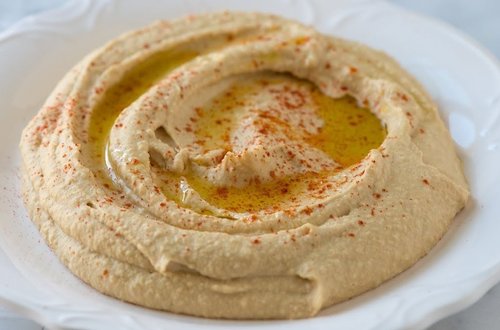
Mealtime customs
Saudi customs regarding mealtimes and table etiquette stem from both their nomadic tribal heritage and their Islamic tradition. Based on the nomadic habits of herding animals during daylight hours, the daytime meals are small, with a large meal at night. The month-long celebration of Ramadan builds on this tradition, requiring a complete fast from dawn to dusk, with a large meal after sundown. Saudi meals are eaten sitting cross-legged on the floor or on pillows around a rug or low table (as in a tent), sharing food from the same plates. The food is usually eaten with the fingers or with a piece of bread. According to Islamic law, only the right hand is used for eating, since the left hand is considered “unclean” because it is used for personal hygiene. The hand washing ritual is completed before and after eating.
Dates and sweet tea are favorite Saudi snacks, and buttermilk, cola, and a yogurt drink known as lassi are popular drinks. Coffee has been a central part of Saudi life for centuries, with an intricate ceremony to prepare and serve it. To prepare the coffee, four different pots are used in which the coffee beans, water and spices are combined and prepared before being served in small cups. It is considered very rude to refuse a cup of coffee offered by the host, and it is very polite to accept an odd number of cups (one, three, five, etc.). Saudi men spend a lot of time in cafes, drinking coffee or tea and talking.
Qahwa (Arabic Coffee) 6
Ingredients
- 3 cups of water
- 2 tablespoons ground decaffeinated coffee
- 3 tablespoons cardamom (coarse)
- ¼ teaspoon saffron (optional)
Process
- Boil the water in a pot. Add the coffee to the water and bring it to a simmer. (In Saudi Arabia, the coffee would be strong and highly caffeinated.)
- Remove from heat and let coffee beans settle.
- Put the cardamom in another pot, strain the coffee (removing the grounds) in the second pot, and add the saffron.
- Bring to a boil and serve immediately.
Politics, economics and nutrition
Saudis in general receive adequate nutrition. The country’s agricultural practices have been modernized and the Government has made significant investments in irrigation. Saudi farmers grow and raise almost enough crops and livestock to meet the needs of the population.
According to the World Bank, less than 4 percent of the population experiences inadequate nutrition and almost 90 percent of Saudi citizens have access to adequate sanitation.
Share the typical food of Saudi Arabian cuisine.
